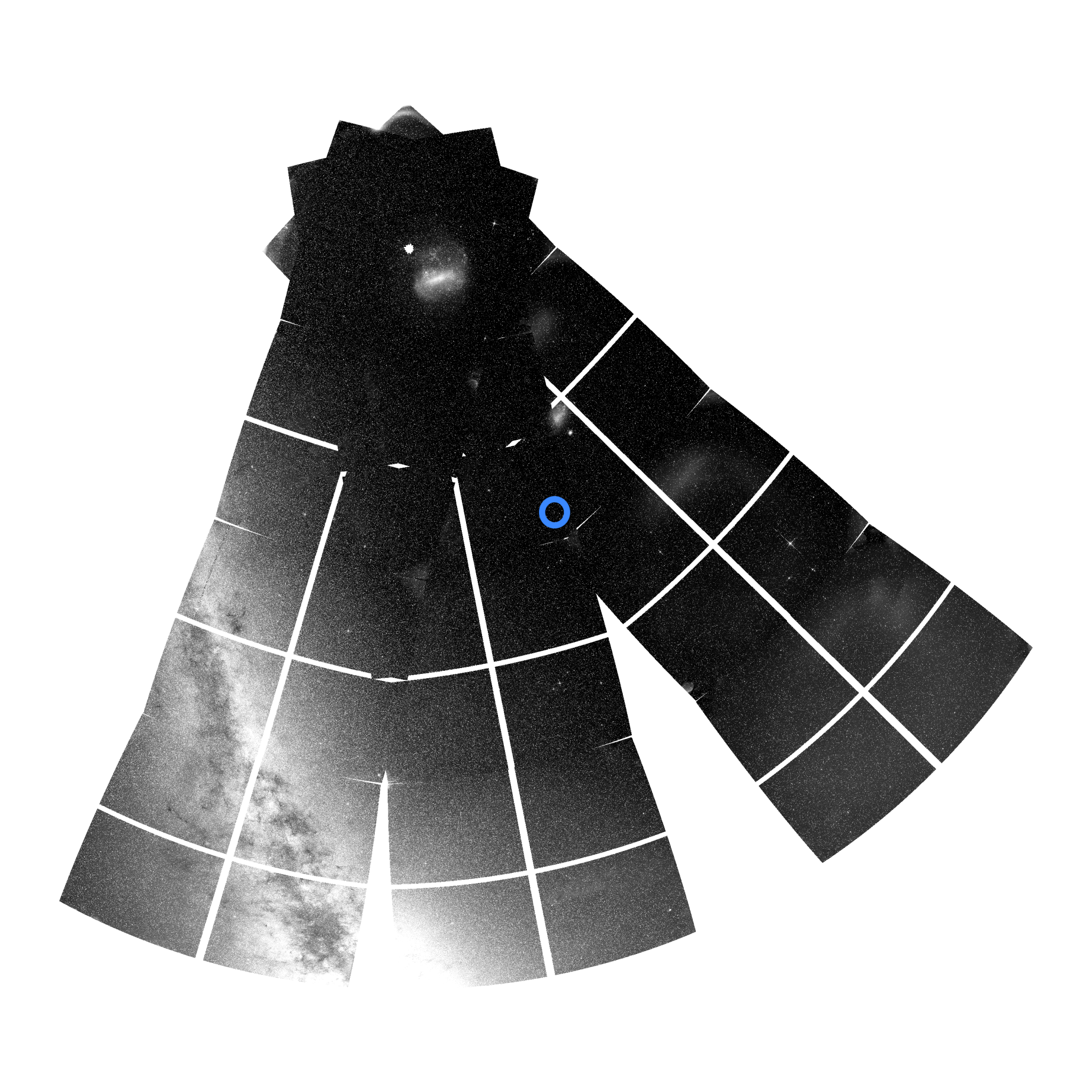TESS dates an ancient collision with our galaxy

The study, with the participation of an IEEC researcher at ICE, is published in the journal Nature Astronomy.
A single bright star, situated in the constellation of Indus — visible from the southern hemisphere — has revealed new insights on an ancient collision that the Milky Way underwent with another smaller galaxy, called Gaia-Enceladus, early in its history.
The team, that was led by the University of Birmingham and that included a researcher of the Institute of Space Studies of Catalonia (IEEC — Institut d’Estudis Espacials de Catalunya) at the Institute of Space Science (ICE-CSIC) Aldo M. Serenelli, has used the characterisation of a single ancient, bright star, called ν Indi, to study the history of the Milky Way. Stars carry “fossilized records” of their histories and, hence, the environments in which they formed. The team used data from spatial and ground-based telescopes to unlock this information from the star ν Indi.
The star was aged using its natural oscillations (asteroseismology), detected in data collected by NASA's Transiting Exoplanet Survey Satellite (TESS). Launched in 2018, TESS is surveying stars across most of the sky to search for planets orbiting the stars and to study the stars themselves. When combined with data from the European Space Agency’s Gaia Mission, TESS data have revealed that ν Indi was born early in the history of the Milky Way, 11.5 billion years ago, and later the Gaia-Enceladus collision altered its motion in our Galaxy.
William J. Chaplin, Professor of Astrophysics at the University of Birmingham and lead author of the study, said: “Since the motion of ν Indi was affected by the Gaia-Enceladus collision, the collision must have happened once the star had formed. That is how we have been able to use the astereoseismically-determined age to place new limits on when the Gaia-Enceladus event occurred.”
The presence in our galaxy of many stars belonging to Gaia-Enceladus indicates that its collision with the Milky Way had and has had a large impact on the evolution of our Galaxy. Understanding this is now a very trending topic in astronomy, and this study is an important step in determining exactly when this collision occurred.
"Stellar oscillations are very sensitive to the internal structure of the star, which changes as it evolves. This sensitivity has allowed us, by comparing the observations made by TESS and models of stellar structure and evolution developed at our institute, to determine with great accuracy the age of ν Indi and, therefore, the moment in the history of the Milky Way when it formed", explains Aldo M. Serenelli, IEEC researcher at ICE (CSIC).
The work also demonstrates the potential of asteroseismology made with TESS, and the possibilities that arise when it is possible to combine observations with state-of-the-art instruments, even in the case of a single bright star.
Links
More information
This research is presented in the paper “Age dating of an early Milky Way merger via asteroseismology of the naked-eye star ν Indi”, de W. J. Chaplin, A. M. Serenelli et al., which was published in the journal Nature Astronomy on 13 January 2020.
The Institute of Space Studies of Catalonia (IEEC — Institut d’Estudis Espacials de Catalunya) promotes and coordinates space research and technology development in Catalonia for the benefit of society. IEEC fosters collaborations both locally and worldwide and is an efficient agent of knowledge, innovation and technology transfer. As a result of over 20 years of high quality research, done in collaboration with major international organisations, IEEC ranks among the best international research centers, focusing on areas such as: astrophysics, cosmology, planetary science, and Earth Observation. IEEC’s engineering division develops instrumentation for ground- and space-based projects, and has extensive experience in working with private or public organisations from the aerospace and other innovation sectors.
IEEC is a private non-profit foundation, governed by a Board of Trustees composed of Generalitat de Catalunya and four other institutions that each have a research unit, which together constitute the core of IEEC R&D activity: the University of Barcelona (UB) with the research unit ICCUB — Institute of Cosmos Sciences; the Autonomous University of Barcelona (UAB) with the research unit CERES — Center of Space Studies and Research; the Polytechnic University of Catalonia (UPC) with the research unit CTE — Research Group in Space Sciences and Technologies; the Spanish Research Council (CSIC) with the research unit ICE — Institute of Space Sciences. IEEC is integrated in the CERCA network (Centres de Recerca de Catalunya).
Image
PR_Image1: The sky as seen by TESS
Caption: TESS image of the southern sky showing the location of v Indi (marked with the blue circle), the plane of the Milky Way (bottom left) and the southern ecliptic pole (top). The image is a composition using the data collected by the observations of TESS sectors 1, 12 and 13.
Credit: T. Mackereth (University of Birmingham).
Distribution License: Creative Commons 4.0.
Video
PR_Video1: The orbits of three stars within the Milky Way
Caption: The orbits within the Milky Way for the next 600 million years of three different stars: ν Indi, the Sun and a star originally from Gaia-Enceladus.
Credit: T. Mackereth (University of Birmingham).
Distribution License: Creative Commons 4.0.
Contacts
IEEC Communication Office
Barcelona, Spain
Rosa Rodríguez Gasén
E-mail: comunicacio@ieec.cat
Lead Scientist at IEEC
Institute of Space Science (ICE-CSIC)
Barcelona, Spain
Aldo M. Serenelli
Researcher
E-mail: aldos@ice.csic.es
